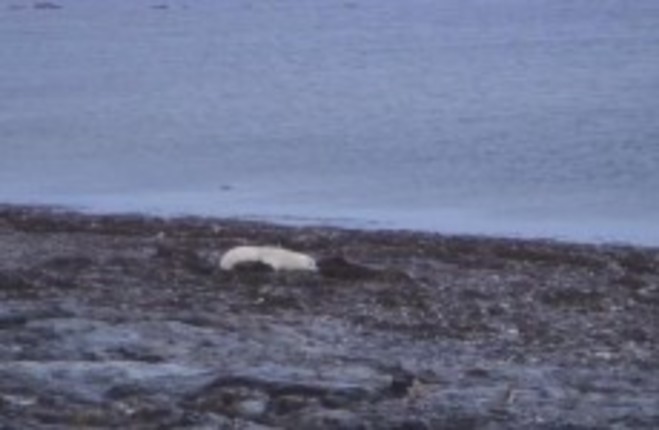EVERY YEAR, HUNDREDS of polar bears migrate to Churchill, Manitoba, Canada, where they wait for the Hudson Bay to freeze and then use the ice to go hunt for seals.
Their trek used to be witnessed mainly by scientists and intrepid tourists, but now anyone can watch from the comfort of their own home.
Now, thanks to an initial $50,000 grant from the Annenberg Foundation to set up four cameras on a makeshift lodge and a roaming Tundra Buggy, plus ongoing payments for bandwidth and technical infrastructure, the bears’ antics and actions can be viewed from anybody’s living room through the foundation’s website, www.explore.org.
Krista Wright, executive vice president of Polar Bears International, an advocacy group based in Bozeman, Montana, said:
It brings the Arctic to the people. The polar bear is the North’s iconic species. This is that exotic animal that people travel from all over the world to see.
There are 20,000 to 25,000 polar bears worldwide. The Western Hudson Bay polar bears, one of 19 subpopulations, are estimated to number between 600 and 800.
Their gathering point near the former military town of Churchill makes them among the most accessible and studied group of bears in existence.
Their numbers are expected to grow over the next few weeks as the weather turns colder, culminating with the bay expected to freeze around the third week of November.
The Polar Bears International camp on the tundra is about 50 kilometres outside of town, and each September to November, they and Frontiers North Adventures host scientists and hold webcasts for schoolchildren.
These give them a firsthand view of how climate change is damaging the bears’ habitat.
But at the moment, it’s unseasonably warm in Manitoba, as evidenced on the webcam by the tundra bare of snow.
That raises concerns that ice will be late in forming again this year — last year, freeze-up didn’t happen until mid-December, nearly a month later than usual.
That’s a problem for the bears, Wright said.
It’s breaking up earlier and freezing later, so the time they’re spending on land is longer. The time they’re on land, they’re basically fasting.
Charles Annenberg Weingarten, the foundation’s vice president and a trustee, said the polar bear webcam is an experiment he hopes to expand into a program called Pearls of the Planet that would place streaming cameras in various wild places.
Weingarten said a new feature will be added to the polar bear webcam soon that will allow viewers to document their observations of the polar bears on the website.
The idea, he said is to encourage scientific learning – something like a Sesame Street for adults.


